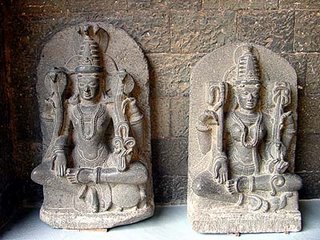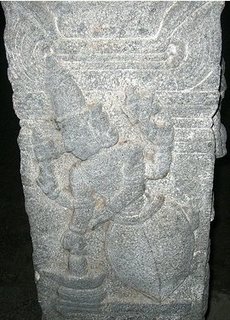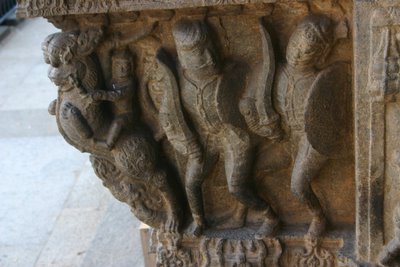Here is a link to the history of Vellore and the fort.
http://en.wikipedia.org/wiki/VelloreApparently, Vellore was the site of the a sepoy mutiny in India(in 1806). This was news to me.
The details of the mutiny are pretty similar to the later one in 1857, though much smaller in scale. The same pattern repeats :English officers unaware or insensitive to their soldiers concerns, Religious differences, local rulers stepping in to provide nominal leadership, brutal violence and reprisals.
And I thought that 1857 was the first (and only) sepoy rebellion. There was an earlier (and somewhat smaller) rebellion in Vizag in 1780.
The temple is built in the Vijayanagara Style, and the fort has been controlled by the Nayaks, the Sultan of Bijapur, the Marathas, the Arcot Nawabs and the British. The temple is quite nicely maintained. I walked around the fort walls, and unfortunately, they are not as clean as they could be. There were some cleaning efforts going on, hopefully they have been completed.
There is also a small musuem in the fort complex. The musuem has some interesting displays. It has some Veerakkals dating from the chola periods. Veerakkals are stone steles that commomerate the death of a hero. I forgot to take photographs of these, unfortunately.
There are also some bronze swords, dating to about 3000 years ago and some more modern swords (tulwars, a couple of patas, and tulwar-sized khukri. There are some paintings and sculptures dating from the pallava era to the chola era. There was an interesting display showing the differences between the different sculptural styles.


















